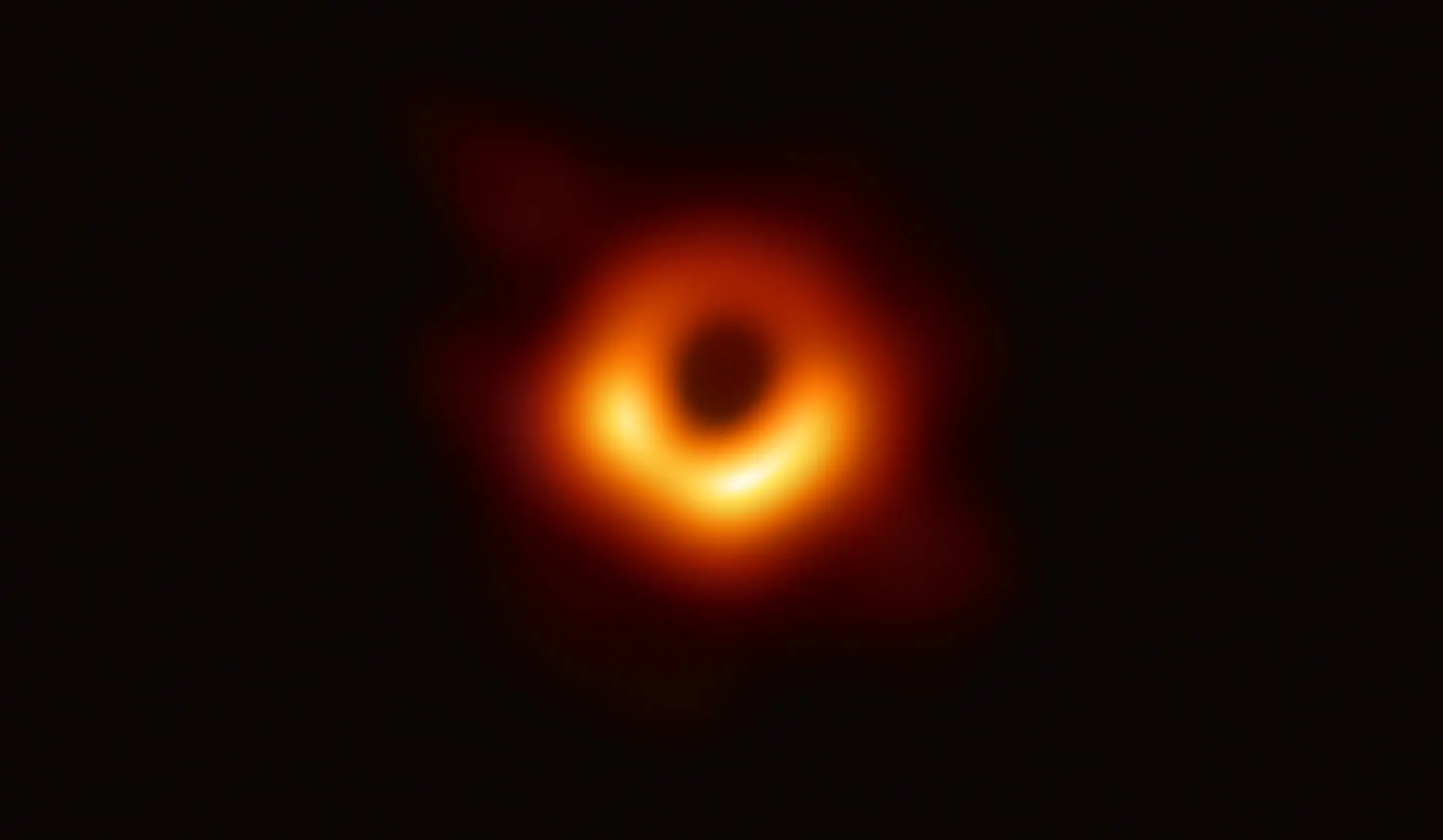Discoveries
On October 3, 2011, ALMA unveiled a new view of the Antenna Galaxies as its first scientific image. Even though ALMA was still under construction and contained only 12 antennas, the image showed ALMA's scientific potential, revealing an unprecedented perspective over the merging galaxies by exposing the cold dust and gas in its interstellar medium.
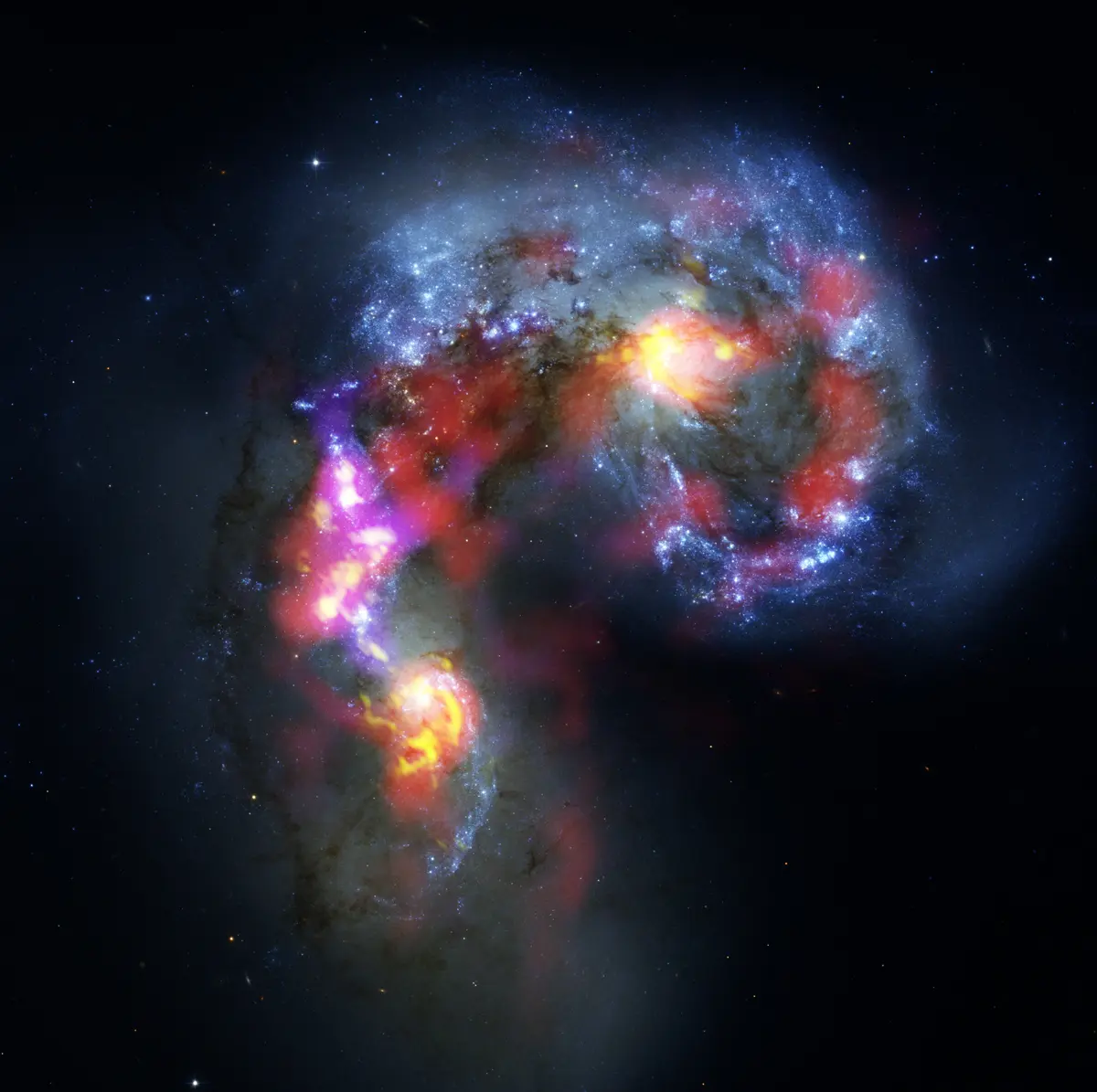
Over the next decade, the astronomical community has published more than 2,500 papers using ALMA data covering a wide range of targets in the Cosmos. From the farthest forming galaxies to the moons of the Solar System, the ALMA observatory has helped astronomers make transformational science, modifying the boundaries of our understanding in search of our Cosmic Origins.
Observations with ALMA have been able to deepen our understanding of a variety of astronomical subjects. Here there are some examples:
Galaxy formation
In 2018, astronomers studied the formation of galaxies and used ALMA to detect the most distant oxygen molecules known. The discovery located 13.28 billion light-years away allowed the research team to determine that star formation started unexpectedly in that galaxy, as early as 250 million years after the Big Bang. For a period after the Big Bang, there was no oxygen in the Universe. Oxygen was created in stars and then released when the stars died. The detection of oxygen in MACS1149-JD1 indicates that an earlier generation of stars had already formed and expelled processed oxygen by the galaxy's age, which is only about 500 million years after the Universe's beginning.
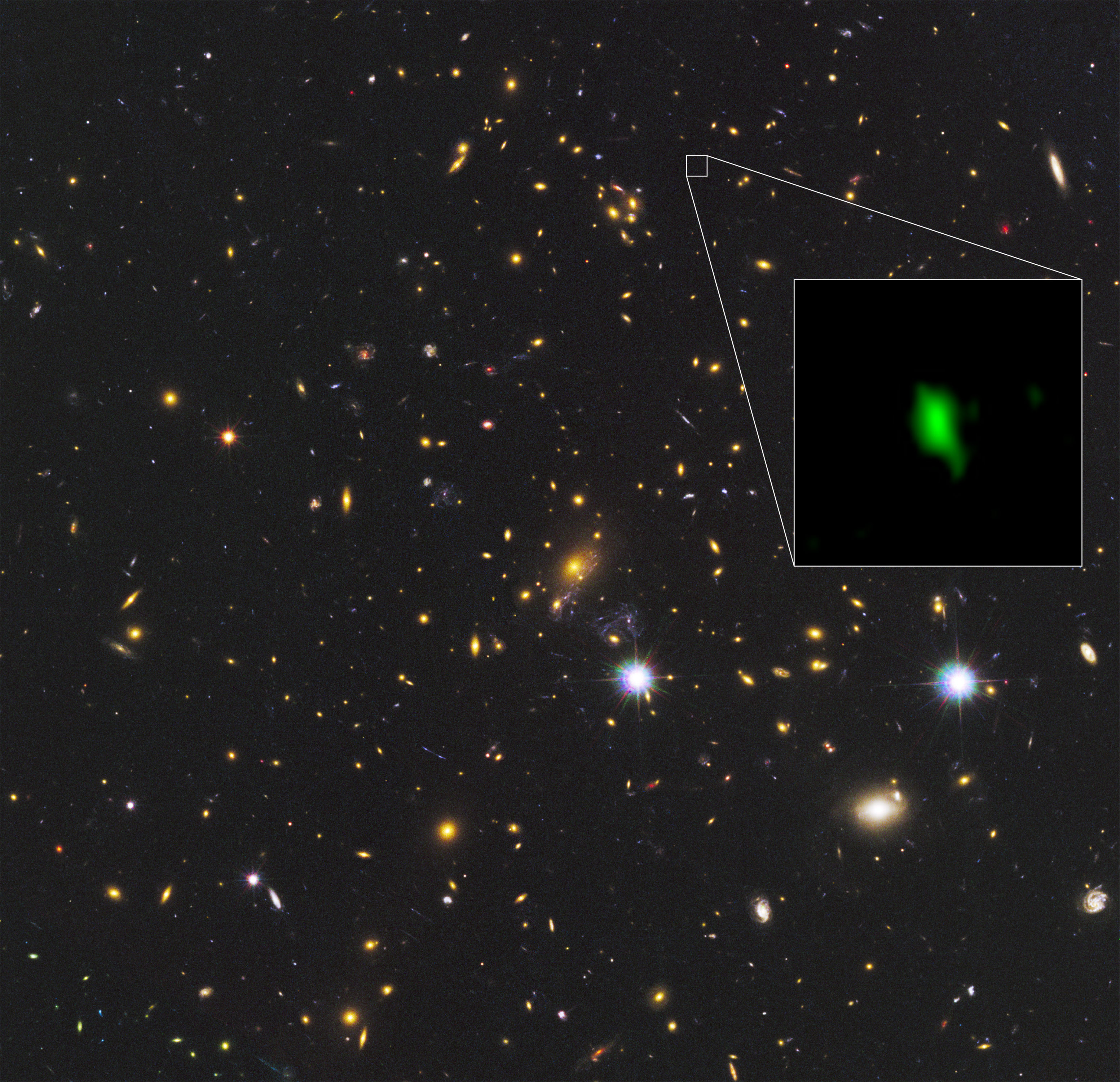
In 2020, the Astrophysical Journal published an unprecedented view of gas and dust in a cosmological deep field. An international group of astronomers used ALMA to obtain an inventory of molecular gas and dust in distant galaxies at unprecedented depth in the iconic Hubble Ultra-Deep Field (H-UDF), one of the best-studied regions of the sky. It has been well established that stars form from the gravitational collapse of dense clouds of molecular gas. Estimating galaxies' molecular gas content and its development over cosmic time is indispensable to characterize their evolution. Such a measurement was one of the three prime directives driving ALMA from its conception. A research team led the ALMA large program ASPECS (The ALMA SPECtroscopic Survey in the Hubble Ultra-Deep Field) with this goal in mind. This was the first approved extragalactic large program designed to make an unbiased, three-dimensional survey of the molecular gas content of galaxies in the best-studied extragalactic deep field, the H-UDF.
Star Formation
ALMA radio telescope has also deepened the understanding of star formation. In 2021, astronomers used ALMA to map the nearby Universe and reveal the diversity of star-forming galaxies. Stars are formed out of clouds of dust and gas called molecular clouds, or stellar nurseries. Each stellar nursery in the Universe can form thousands or even tens of thousands of new stars during its lifetime. Between 2013 and 2019, astronomers on the PHANGS— Physics at High Angular Resolution in Nearby GalaxieS— project conducted the first systematic survey of 100,000 stellar nurseries across 90 galaxies in the nearby Universe to get a better understanding of how they connect back to their parent galaxies. They found that stellar nurseries are very diverse in shape and size and very different from place to place, resulting in consequences on the stars being formed.
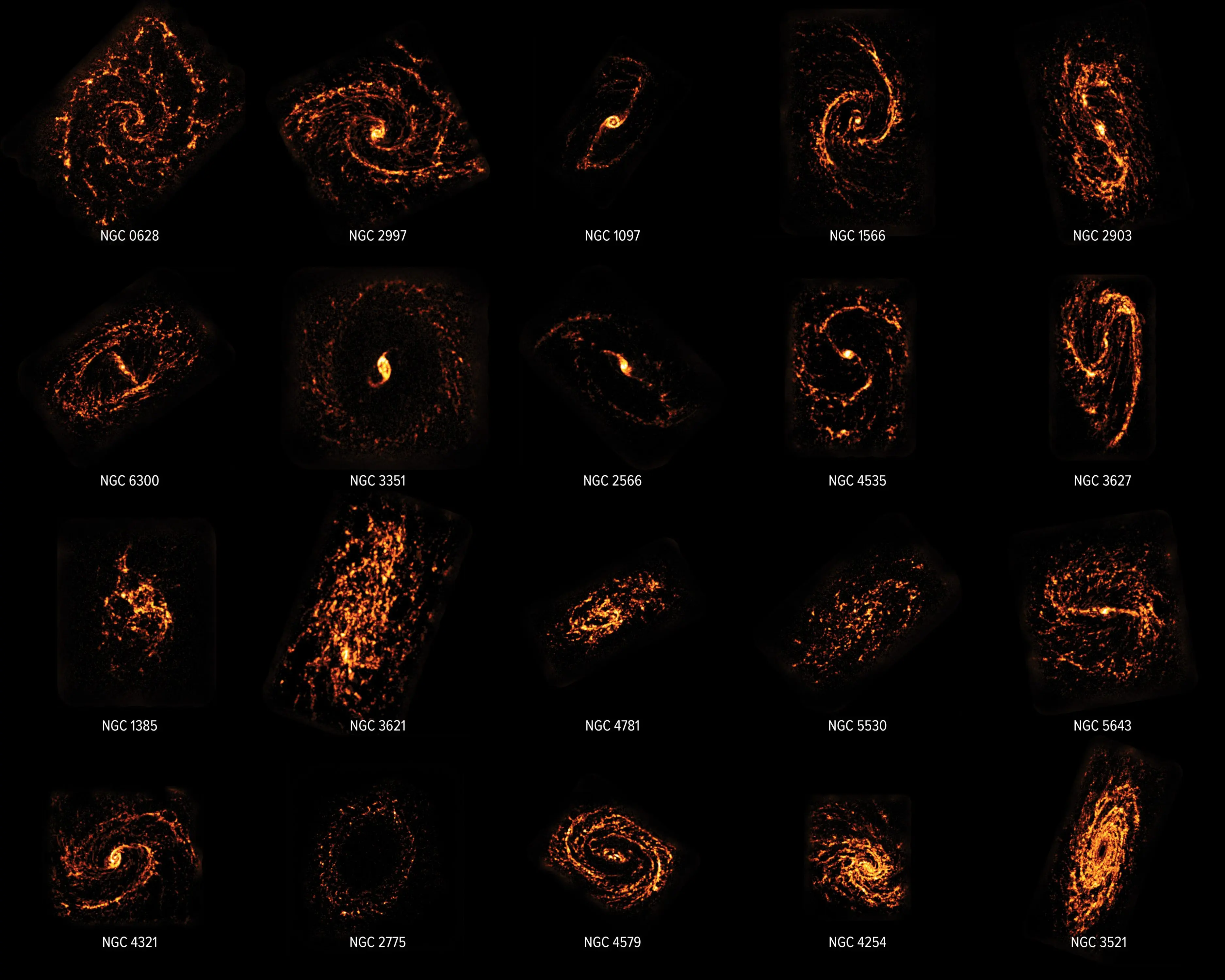
Earlier, in March 2018, astronomers used ALMA and other telescopes to reveal the inner web of the stellar nurseries in the Orion Nebula. A stunning image of a web of filaments appearing in red combines data from ALMA, IRAM's 30-meter telescope, and the HAWK instrument in the ESO's Very Large Telescope. The red filaments are structures of cold gas, only visible to telescopes working in the millimeter wavelength range, such as ALMA. They are invisible at both optical and infrared light, making ALMA one of the only instruments available for astronomers to study them. This gas gives rise to newborn stars — it gradually collapses under the force of its own gravity until it is sufficiently compressed to form a protostar — the precursor to a star.

Death of Stars
Three decades ago, astronomers spotted one of the brightest exploding stars in more than 400 years. The titanic supernova, called Supernova 1987A (SN 1987A), blazed with the power of 100 million suns for several months following its discovery on February 23, 1987.
To commemorate the 30th anniversary of SN 1987A, astronomers released new images and research based on work combining data from NASA's Hubble Space Telescope and Chandra X-ray Observatory, as well as ALMA, to explore SN 1987A like never before, opening a new era for the legendary supernova.
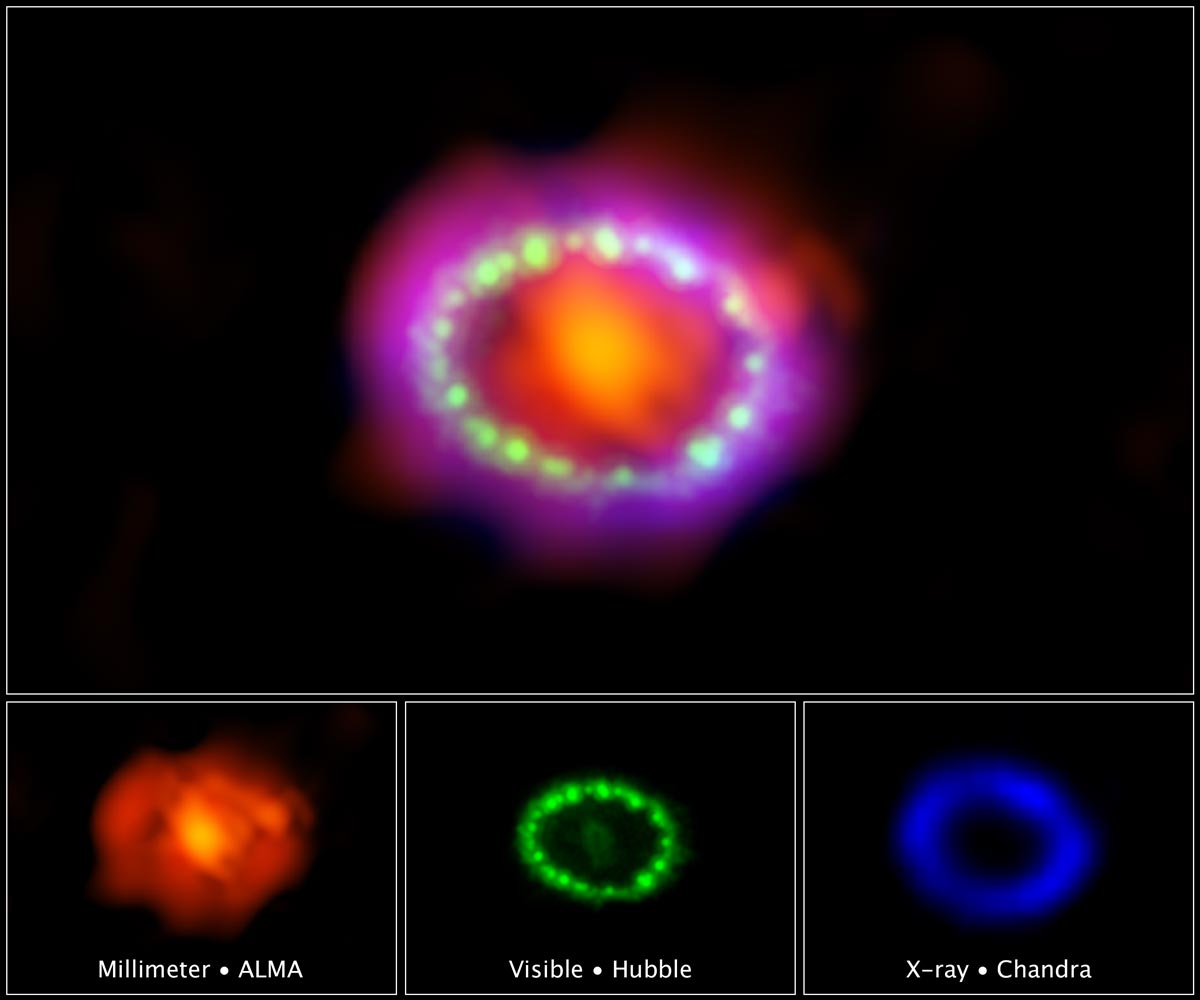
Not all stars become supernovas when dying. Some stars swell and cool to eventually become red giants. They produce stellar winds, flows of particles that the star expels, which causes them to lose mass. Because detailed observations were lacking, astronomers have always assumed that these winds were spherical, like the stars they surround. As the star evolves further, it heats up again, and the stellar radiation causes the expanding ejected layers of stellar material to glow, forming a planetary nebula.
In 2020, astronomers used ALMA to observe a set of stellar winds around aging stars and explained the mesmerizing shapes of planetary nebulae. Contrary to common consensus, the team found that stellar winds are often not spherical but form like planetary nebulae. They concluded that interaction with an accompanying star or exoplanet shapes the stellar winds and the planetary nebulae. The findings were published in the prestigious magazine Science.
Planets
In 2014, ALMA extended its arms to achieve its highest angular resolution and observed HL Tau. The revolutionary image revealed planetary genesis like no other telescope could before, taking an enormous step forward in understanding how protoplanetary disks develop and how planets form. The image exceeded all expectations and revealed a series of concentric and bright rings, separated by gaps. This ALMA image provided the most unmistakable evidence for ongoing planet formation within a protoplanetary disk and that planets form faster than previously thought.
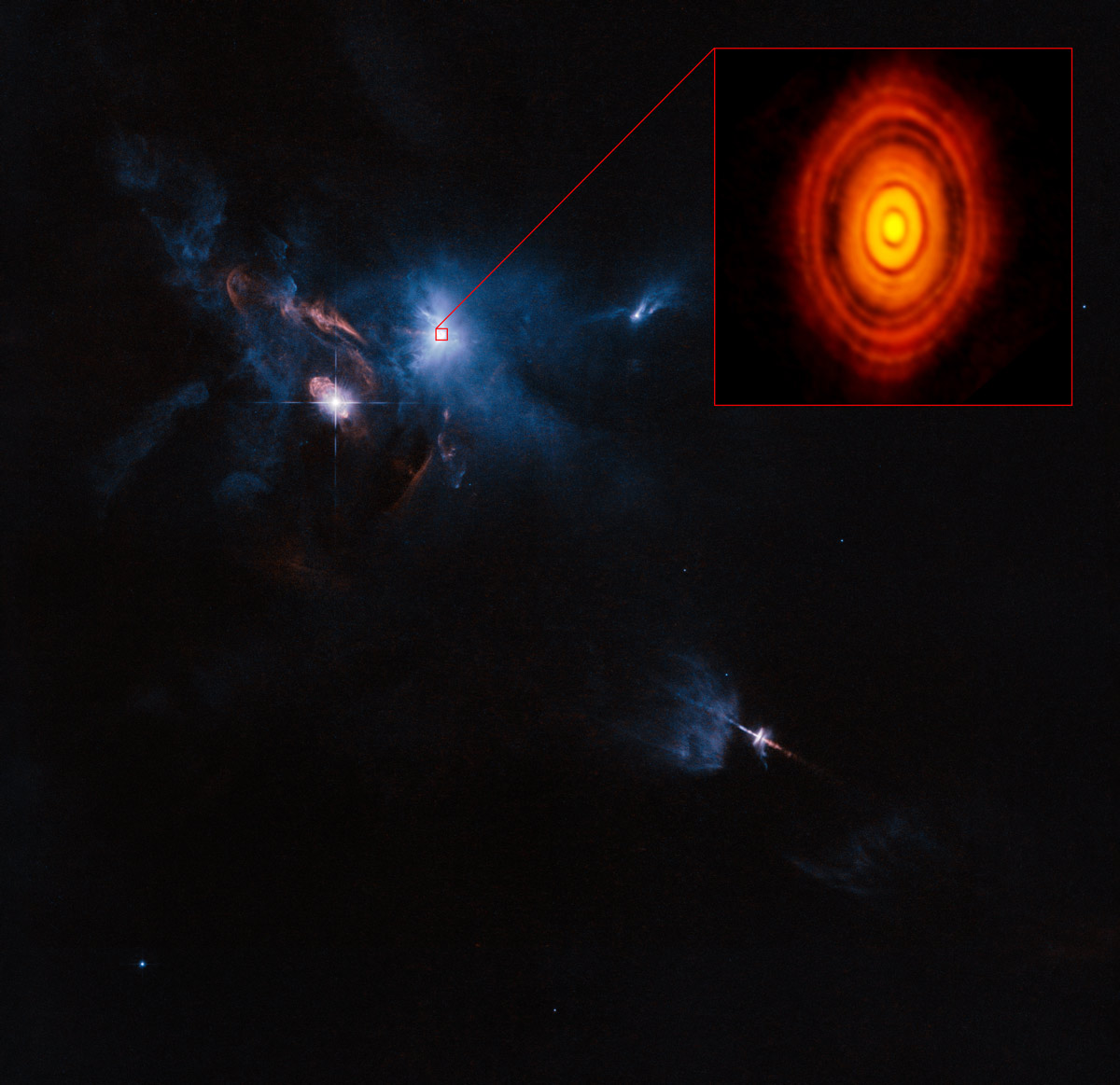
The astronomical community continued to push the study of planetary genesis with ALMA over the years, and in 2018 a global team of researchers published the results of a campaign providing unprecedented views of the birth of planets. Known as the Disk Substructures at High Angular Resolution Project (DSHARP), this Large Program yielded stunning, high-resolution images of 20 nearby protoplanetary disks. It provided astronomers new insights into the variety of features in disks and the speed with which planets can emerge. According to the researchers, the most compelling interpretation of these observations is that giant planets, likely similar in mass to Neptune or Saturn, form quickly, much faster than current theory would indicate. They also tend to form in the outer reaches of their solar systems at tremendous distances from their host stars.
Solar System
Closer to the Earth, ALMA has also observed a diversity of targets, allowing astronomers and scientists to study our cosmic neighborhood better.
In 2019, astronomers used ALMA observations to unveil the guts of Jupiter's storms: swirling clouds, big colorful belts, giant storms. The beautiful and incredibly turbulent atmosphere of Jupiter has been showcased many times. But what is going on below the clouds? What is causing the many storms and eruptions that we see on the 'surface' of the planet? To study this, visible light is not enough. Researchers needed to study Jupiter using radio waves. A new set of radio wave images made with ALMA provided a unique view of Jupiter's atmosphere down to fifty kilometers below the planet's visible cloud deck.
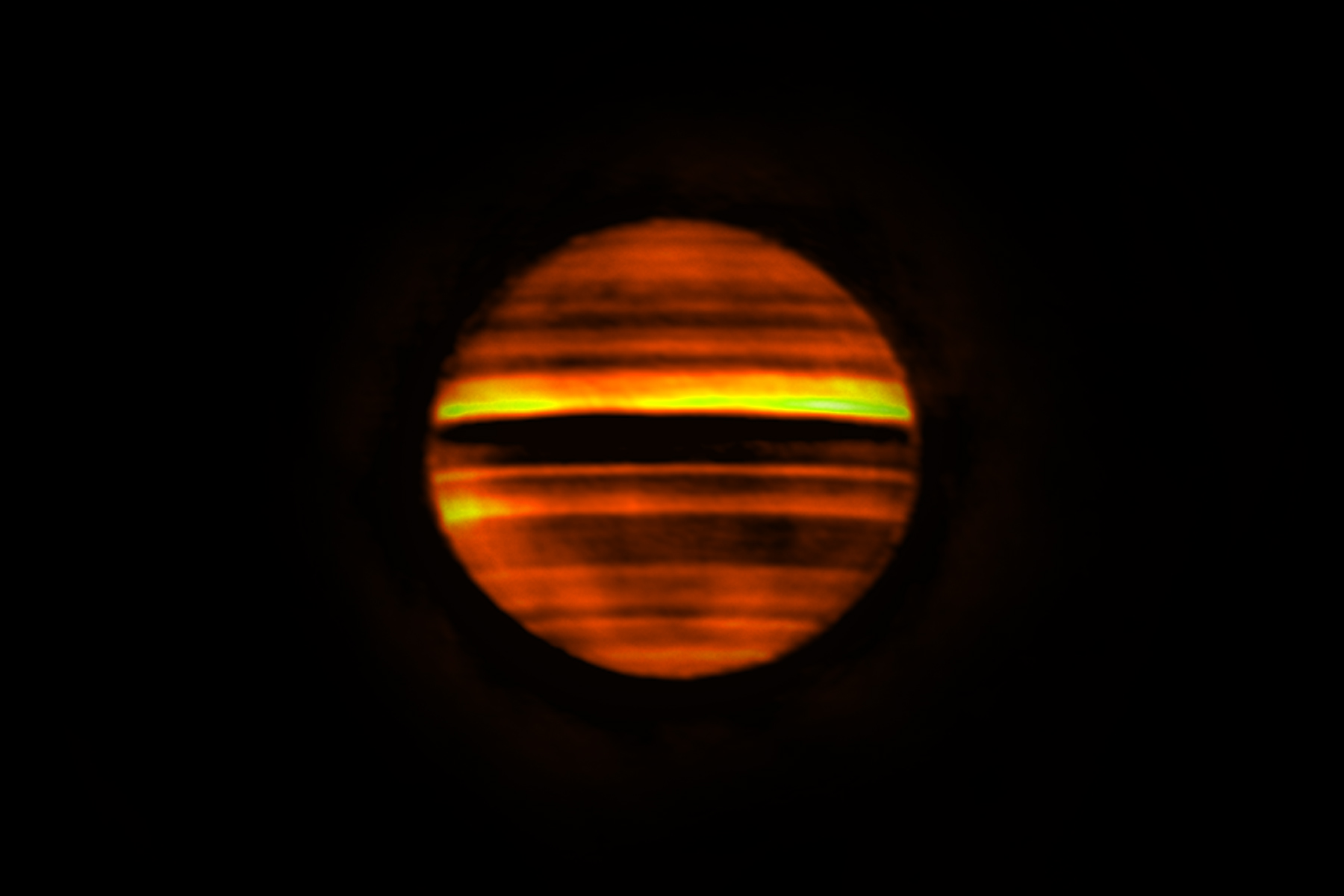
Other targets studied in the Solar System are asteroids, comets, moons, and other planets. ALMA has even helped NASA precisely locate Pluto, allowing its mission New Horizons to get an unprecedented view of the dwarf planet.
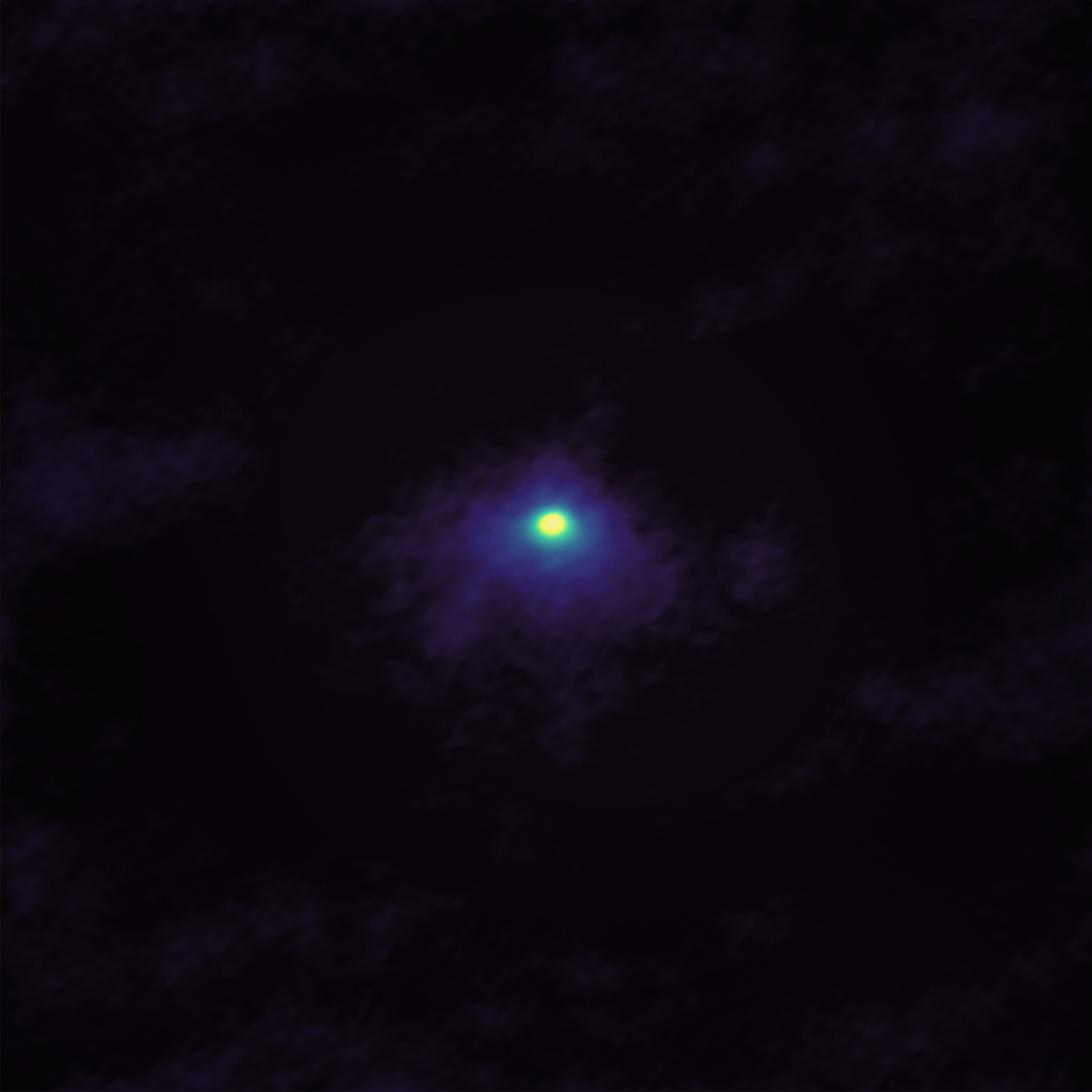

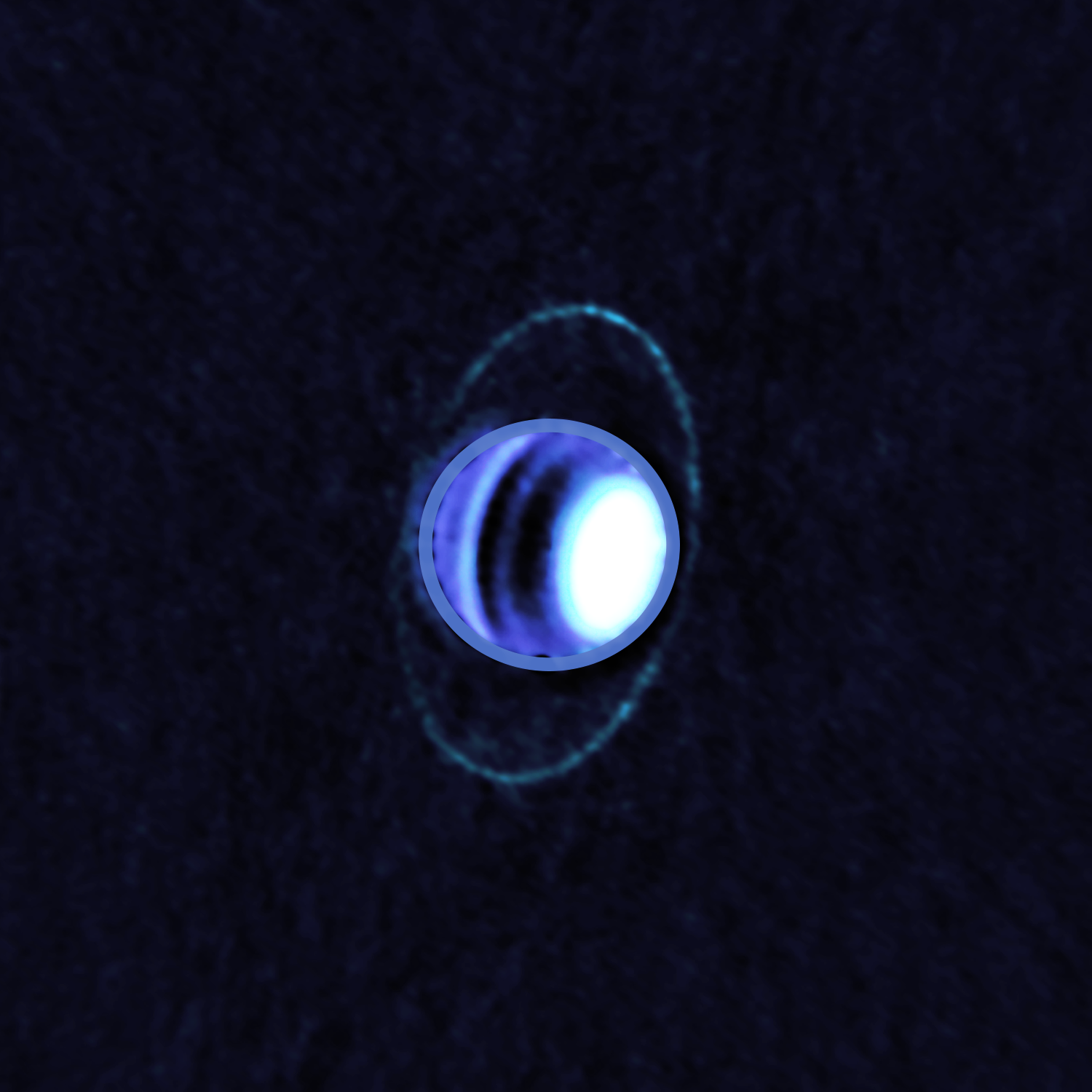
Black Holes
Last but not least, ALMA has joined a global collaboration of radio observatories (the Event Horizon Telescope - EHT) to form an Earth-size interferometer and allow astronomers to reveal the first image of a black hole. ALMA is the largest millimeter-wave telescope in the world and was critical in the collaboration. ALMA's unprecedented capabilities ensured high-quality calibration of the data to each of the other telescopes in the array, resulting in the fantastic images from the EHT.
